Sennheiser MKH 40-P48
Add this product to
- My former gear
- My current gear
- My wishlist
Tech. sheet
- Manufacturer: Sennheiser
- Model: MKH 40-P48
- Series: MKH
- Category: Small diaphragm condenser microphones
- Package weight:750 g
- Other names:mkh 40 p48, mkh40p48, mkh 40 p 48, mkh40 p48, mkh 40p48
We have no technical specifications for this product
but your help will be much welcomed
»
User reviews
5.0/5(2 reviews)
5
100 %
4
3
2
1
Super Micro!
Published on 04/23/08 at 13:02 (This content has been automatically translated from French)The MKH 40 is an RF condenser microphone condenser, cardioid pattern. I use it a couple AB for taking his music (acoustic sets) and especially outside to the sound recording (documentary, soundscapes, sound "nature")
Directivity: Cardioid
Sensitivity (free field, no load, 1 kHz): 25 (8) mV / Pa + - 1 dB
Impedance: 150 Ohm
Terminating impedance: 1000 Ohm
Equivalent noise level: 12 (18) dB
Power supply: Phantom 48 + - 4 V
Consumption: 2 mA
Dimensions: 25 x 153 mm
Weight ca. 100 g
Switch to 80 Hz Low Cut
Attenuation - 10 dB (a level max sound pressure of 134 dB SPL)
OVERALL OPINION
Sennheiser MKH series is widely used (and acclaimed!) On film (movies, documents)...…
Directivity: Cardioid
Sensitivity (free field, no load, 1 kHz): 25 (8) mV / Pa + - 1 dB
Impedance: 150 Ohm
Terminating impedance: 1000 Ohm
Equivalent noise level: 12 (18) dB
Power supply: Phantom 48 + - 4 V
Consumption: 2 mA
Dimensions: 25 x 153 mm
Weight ca. 100 g
Switch to 80 Hz Low Cut
Attenuation - 10 dB (a level max sound pressure of 134 dB SPL)
OVERALL OPINION
Sennheiser MKH series is widely used (and acclaimed!) On film (movies, documents)...…
Read more
The MKH 40 is an RF condenser microphone condenser, cardioid pattern. I use it a couple AB for taking his music (acoustic sets) and especially outside to the sound recording (documentary, soundscapes, sound "nature")
Directivity: Cardioid
Sensitivity (free field, no load, 1 kHz): 25 (8) mV / Pa + - 1 dB
Impedance: 150 Ohm
Terminating impedance: 1000 Ohm
Equivalent noise level: 12 (18) dB
Power supply: Phantom 48 + - 4 V
Consumption: 2 mA
Dimensions: 25 x 153 mm
Weight ca. 100 g
Switch to 80 Hz Low Cut
Attenuation - 10 dB (a level max sound pressure of 134 dB SPL)
OVERALL OPINION
Sennheiser MKH series is widely used (and acclaimed!) On film (movies, documents) and notament outdoors. Indeed, this series is made from a patented technology known as RF bias: the membrane of the capacitor is biased high frequency, making it (among other benefits) insensitive to weather conditions. What is the standard adopted by all policyholders of its "nature" that run under extreme conditions: maximum humidity, sudden temperature changes (condensation), gel ... Where the Schoeps, Neumann and other sizzling or DPA may whistle, the MKH proved 100% reliable. I actually turned by 15 ° C on the banks of the St. Lawrence and on the third day, I started hearing a slight noise on the microphone on the left. I returned the pickups: the next day, everything was working again!
Other highlights: a linear frequency independent, a little background noise and a very uniform frequency response - Apart from the proximity effect inherent in cardioid, it seems to turn with omni: magnitude of low frequency , stitched, natural wealth and stamps. It's a dream to run in stereo with a pair of MKH 40!
It's also a microphone that I use on stage nearby, and with the attenuator, although upset even a trumpet does not saturate! With of course, again, exceptional sound reproduction.
Small flat: Cut down the switches (80 Hz) and attenuation is-10dB with plastic and not very accessible, thus avoiding to activate by mistake but if you forgot his Leathermann or that no sharp pencil, it is good to screw up the switch.
Is that one must have a microphone in his bag, or rather at the end of his pole. However, due to the high linearity, if one only has to turn the vote (film), I would tend to the Schoeps, a little softer. But if you want a very realistic sound reproduction and sharpness, the MKH 40 microphone is my favorite.
Directivity: Cardioid
Sensitivity (free field, no load, 1 kHz): 25 (8) mV / Pa + - 1 dB
Impedance: 150 Ohm
Terminating impedance: 1000 Ohm
Equivalent noise level: 12 (18) dB
Power supply: Phantom 48 + - 4 V
Consumption: 2 mA
Dimensions: 25 x 153 mm
Weight ca. 100 g
Switch to 80 Hz Low Cut
Attenuation - 10 dB (a level max sound pressure of 134 dB SPL)
OVERALL OPINION
Sennheiser MKH series is widely used (and acclaimed!) On film (movies, documents) and notament outdoors. Indeed, this series is made from a patented technology known as RF bias: the membrane of the capacitor is biased high frequency, making it (among other benefits) insensitive to weather conditions. What is the standard adopted by all policyholders of its "nature" that run under extreme conditions: maximum humidity, sudden temperature changes (condensation), gel ... Where the Schoeps, Neumann and other sizzling or DPA may whistle, the MKH proved 100% reliable. I actually turned by 15 ° C on the banks of the St. Lawrence and on the third day, I started hearing a slight noise on the microphone on the left. I returned the pickups: the next day, everything was working again!
Other highlights: a linear frequency independent, a little background noise and a very uniform frequency response - Apart from the proximity effect inherent in cardioid, it seems to turn with omni: magnitude of low frequency , stitched, natural wealth and stamps. It's a dream to run in stereo with a pair of MKH 40!
It's also a microphone that I use on stage nearby, and with the attenuator, although upset even a trumpet does not saturate! With of course, again, exceptional sound reproduction.
Small flat: Cut down the switches (80 Hz) and attenuation is-10dB with plastic and not very accessible, thus avoiding to activate by mistake but if you forgot his Leathermann or that no sharp pencil, it is good to screw up the switch.
Is that one must have a microphone in his bag, or rather at the end of his pole. However, due to the high linearity, if one only has to turn the vote (film), I would tend to the Schoeps, a little softer. But if you want a very realistic sound reproduction and sharpness, the MKH 40 microphone is my favorite.
See less
110
»
It's tough to do without!
Published on 06/20/11 at 01:53 (This content has been automatically translated from French)See global opinion.
OVERALL OPINION
The recipe for this microphone is simple: a very low noise and very good resistance to pressure. These factors give quite naturally to a dynamic micro chip.
The MKH 40 is primarily a studio microphone with cardioid static type of two switches, a low cut from 250 Hz to 6 dB per octave and a -10 dB attenuator. Besides, I wonder if this attenuator is useful in view of its Coptic intrinsic capacity to withstand intense pressure. That said, this reduction of 10 dB increases obviously holding the sensor when approached by intense overpressure, we can work more close with no change in transistors and get a hyper-realism that gives the feeling to be...…
OVERALL OPINION
The recipe for this microphone is simple: a very low noise and very good resistance to pressure. These factors give quite naturally to a dynamic micro chip.
The MKH 40 is primarily a studio microphone with cardioid static type of two switches, a low cut from 250 Hz to 6 dB per octave and a -10 dB attenuator. Besides, I wonder if this attenuator is useful in view of its Coptic intrinsic capacity to withstand intense pressure. That said, this reduction of 10 dB increases obviously holding the sensor when approached by intense overpressure, we can work more close with no change in transistors and get a hyper-realism that gives the feeling to be...…
Read more
See global opinion.
OVERALL OPINION
The recipe for this microphone is simple: a very low noise and very good resistance to pressure. These factors give quite naturally to a dynamic micro chip.
The MKH 40 is primarily a studio microphone with cardioid static type of two switches, a low cut from 250 Hz to 6 dB per octave and a -10 dB attenuator. Besides, I wonder if this attenuator is useful in view of its Coptic intrinsic capacity to withstand intense pressure. That said, this reduction of 10 dB increases obviously holding the sensor when approached by intense overpressure, we can work more close with no change in transistors and get a hyper-realism that gives the feeling to be involved in Even within the sound material.
The capsule of the microphone is low-section and in fact it reduces the excessive diffraction phenomena. In addition the sensor location, close to the sources, is easily done.
With this microphone I made a recording of music for saxophones, the full range of sopranino to bass sax (the spectrum was 25 Hz to 18 kHz). No less than forty re-recording with successive sub-mix, as well as percussion, strings, piano and voice. The sound is full, never hard chiselled non-aggressive, accurate and the fever is a natural absolute natural with the medium is a certain homogeneity. The grave in turn is by no means redundant, it is surprising firmness.
Having resolved to reduce the lower end of the spectrum of 3 dB from 40 Hz appears to be a rational solution. Indeed, the excessive linearity of the micro up to 40 Hz, if it is exceptional, is not always paid in practice.
When used in stereo phase with a pair of MKH 40 the stability of the sound image is restored to near perfect and the realism is second to none.
This is a tool for micro studio first. His reaction to friction is average, indicating that the membrane is suspended, but it is particularly sensitive to wind and proximity effect. On the other hand, the rejection back is good, which adds to the precision of the useful field.
OVERALL OPINION
The recipe for this microphone is simple: a very low noise and very good resistance to pressure. These factors give quite naturally to a dynamic micro chip.
The MKH 40 is primarily a studio microphone with cardioid static type of two switches, a low cut from 250 Hz to 6 dB per octave and a -10 dB attenuator. Besides, I wonder if this attenuator is useful in view of its Coptic intrinsic capacity to withstand intense pressure. That said, this reduction of 10 dB increases obviously holding the sensor when approached by intense overpressure, we can work more close with no change in transistors and get a hyper-realism that gives the feeling to be involved in Even within the sound material.
The capsule of the microphone is low-section and in fact it reduces the excessive diffraction phenomena. In addition the sensor location, close to the sources, is easily done.
With this microphone I made a recording of music for saxophones, the full range of sopranino to bass sax (the spectrum was 25 Hz to 18 kHz). No less than forty re-recording with successive sub-mix, as well as percussion, strings, piano and voice. The sound is full, never hard chiselled non-aggressive, accurate and the fever is a natural absolute natural with the medium is a certain homogeneity. The grave in turn is by no means redundant, it is surprising firmness.
Having resolved to reduce the lower end of the spectrum of 3 dB from 40 Hz appears to be a rational solution. Indeed, the excessive linearity of the micro up to 40 Hz, if it is exceptional, is not always paid in practice.
When used in stereo phase with a pair of MKH 40 the stability of the sound image is restored to near perfect and the realism is second to none.
This is a tool for micro studio first. His reaction to friction is average, indicating that the membrane is suspended, but it is particularly sensitive to wind and proximity effect. On the other hand, the rejection back is good, which adds to the precision of the useful field.
See less
140
»
Other Sennheiser small diaphragm condenser microphones
-

MKH 800
Small diaphragm condenser microphone
-

MKH 416 P
Small diaphragm condenser microphone
-
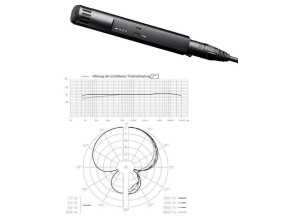
MKH 50
Small diaphragm condenser microphone
$1,999 new (1 offer) -
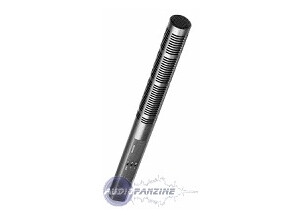
MKH 60
Small diaphragm condenser microphone
-
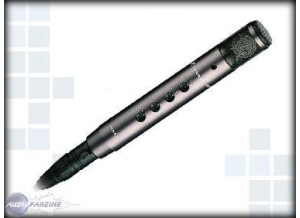
MKH 80
Small diaphragm condenser microphone
$52 new (1 offer) -
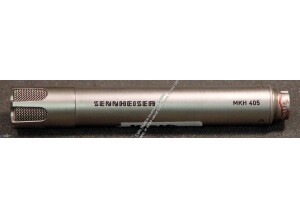
MKH405
Small diaphragm condenser microphone
-
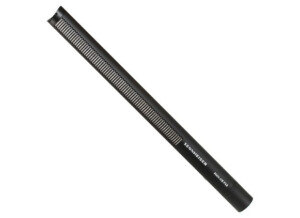
MKH 416
Small diaphragm condenser microphone
$59 new (2 offers) -
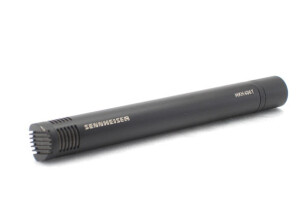
MKH 406 T
Small diaphragm condenser microphone
-
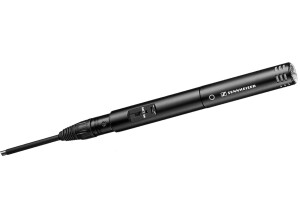
ME 62
Small diaphragm condenser microphone
-
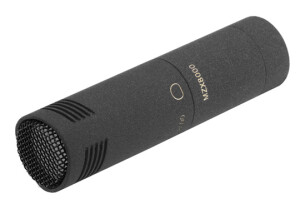
MKH 8090
Small diaphragm condenser microphone
$1,529 new (1 offer)









